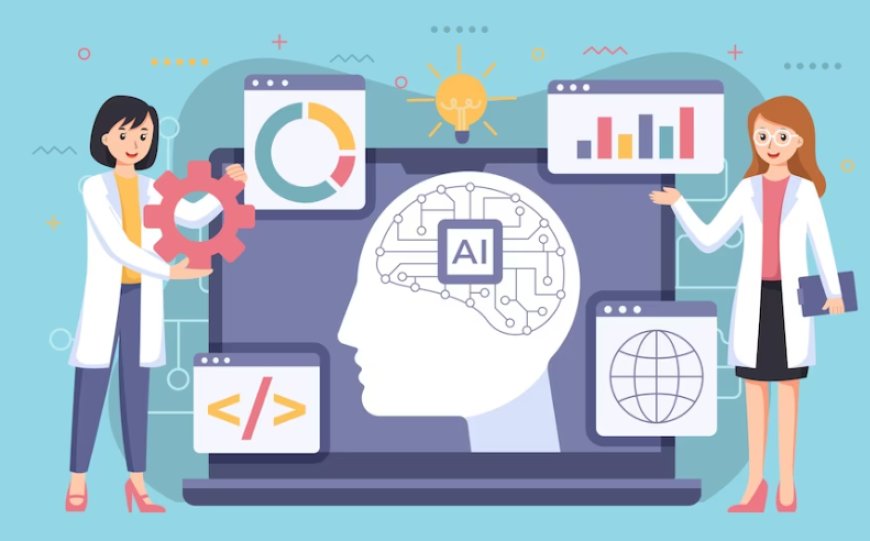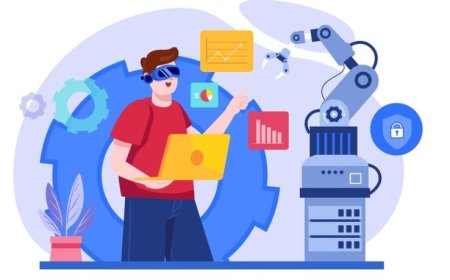Machine Learning is a Subset of Deep Learning
Explore machine learning, deep learning, AI, algorithms, models, neural networks, data, training, techniques, applications, differences.

Machine learning is a broad field within artificial intelligence, encompassing various techniques and algorithms that enable computers to learn and make predictions or decisions from data. On the other hand, deep learning is a specialized subset of machine learning that focuses on neural networks with multiple layers, achieving remarkable success in tasks like image and speech recognition. The misconception often arises when people assume that deep learning is synonymous with machine learning, but in reality, deep learning is just one technique within the broader machine learning spectrum. The purpose of this blog is to clarify this relationship, highlighting how deep learning is a powerful tool within the expansive domain of machine learning, and providing guidance on when to choose one approach over the other in practical applications.
Understanding Machine Learning
Machine learning, at its core, is a branch of artificial intelligence (AI) that employs data-driven techniques to enable computers to learn and improve their performance on specific tasks without being explicitly programmed.
It encompasses various approaches, including supervised learning, where models are trained on labeled data; unsupervised learning, which explores patterns in unlabeled data; and reinforcement learning, where agents make decisions based on rewards and punishments. Machine learning relies on a wide array of algorithms, such as decision trees, support vector machines, and neural networks, with applications spanning across domains like image recognition, natural language processing, recommendation systems, autonomous vehicles, healthcare, finance, and more. This diversity underscores the expansive and versatile nature of machine learning, making it a pivotal field in modern technology.
Deep Learning
Deep learning, a subset of machine learning, represents a paradigm shift in artificial intelligence. At its core are neural networks, computational models inspired by the human brain. What sets deep learning apart is the deployment of deep neural networks with multiple layers, enabling it to automatically extract hierarchical features from data. Prominent architectures such as Convolutional Neural Networks (CNNs) excel at image recognition, while Recurrent Neural Networks (RNNs) capture sequential patterns, and Transformers, a breakthrough innovation, have revolutionized natural language processing tasks. Deep learning has witnessed remarkable successes in diverse fields, from defeating world champions in board games like Go to enabling self-driving cars and powering recommendation systems, solidifying its status as a transformative force in modern technology.
Debunking the Misconception
The relationship between machine learning and deep learning can be clarified by understanding that deep learning is indeed a subset of machine learning. In essence, deep learning is a specialized area within the broader field of machine learning, distinguished by its utilization of deep neural networks with multiple layers. While they share common foundational concepts and principles, they also exhibit substantial areas of overlap and integration, particularly when it comes to data representation and feature learning. This integration allows for the incorporation of deep learning techniques where they are most beneficial, while still leveraging the diverse range of algorithms and methodologies encompassed by machine learning as a whole.
Real-world applications:
A. Real-world examples of machine learning applications
- Spam Email Detection
- Predictive Maintenance in Manufacturing
- Credit Scoring and Risk Assessment
- Medical Diagnosis and Image Analysis
- Recommendation Systems in E-commerce
- Natural Language Processing for Chatbots
- Autonomous Vehicle Control
- Fraud Detection in Financial Transactions
- Speech Recognition for Virtual Assistants
- Stock Market Prediction
B. Instances where deep learning excels and why?
-
Image and Object Recognition: Deep learning's use of convolutional neural networks (CNNs) allows it to excel in tasks like image classification and object detection due to its ability to automatically extract hierarchical features.
-
Natural Language Processing: Deep learning models like Transformers have revolutionized NLP by handling context and relationships in language, leading to significant improvements in tasks like language translation and sentiment analysis.
-
Speech and Audio Processing: Deep learning's recurrent and convolutional neural networks can process audio data effectively, making it suitable for speech recognition and music generation.
-
Large-Scale Data: Deep learning can handle vast amounts of data efficiently, making it well-suited for applications with massive datasets.
C. Instances where traditional machine learning methods are more suitable
-
Tabular Data: Traditional ML algorithms, such as decision trees and random forests, are often more suitable for structured, tabular data, like spreadsheets, customer data, and surveys.
-
Limited Data Availability: Deep learning typically requires large amounts of data to perform well, while traditional ML algorithms can work with smaller datasets effectively.
-
Interpretable Models: Traditional ML models are often more interpretable, which is critical in fields like healthcare and finance where model transparency is essential.
-
Feature Engineering: In cases where feature engineering is a critical part of model development, traditional ML algorithms may offer more control over feature selection and engineering.
When to Choose Machine Learning vs. Deep Learning
When deciding between machine learning and deep learning, several factors come into play. These considerations encompass the nature of your problem and data, the volume and complexity of the data, and the specific domain in which you are working. To select the most appropriate approach, it's crucial to weigh these factors carefully.
Practical guidance for making the right choice involves assessing whether your problem can be effectively solved with traditional machine learning algorithms or if it necessitates the intricate feature extraction and hierarchical pattern recognition capabilities offered by deep learning methods. Understanding these factors and their interplay is essential for leveraging the strengths of each approach and achieving optimal results in your AI and machine learning endeavors.
Future Trends and Concluding Remarks
In the rapidly evolving field of artificial intelligence, emerging trends in machine learning and deep learning continue to shape the landscape, offering new possibilities and applications across various industries. As AI becomes increasingly integrated into our daily lives, from healthcare to finance, it's essential to understand the nuanced relationship between machine learning and deep learning. This blog has shed light on these distinctions, dispelling the misconception that deep learning is a subset of machine learning, and provided guidance on when to leverage each approach effectively. In conclusion, staying informed about the latest trends, recognizing AI's transformative impact, and being equipped with a clarified understanding of these technologies are key takeaways as we navigate the ever-changing AI landscape.
It's clarified that while deep learning is a subset of machine learning, it represents a powerful and specialized tool within this broader field. To fully harness the transformative potential of artificial intelligence and machine learning, we encourage readers to explore both domains. By doing so, they can leverage the strengths of each approach and stay at the forefront of innovation in this dynamic and rapidly evolving field, unlocking new possibilities and solutions for a wide range of applications.




































